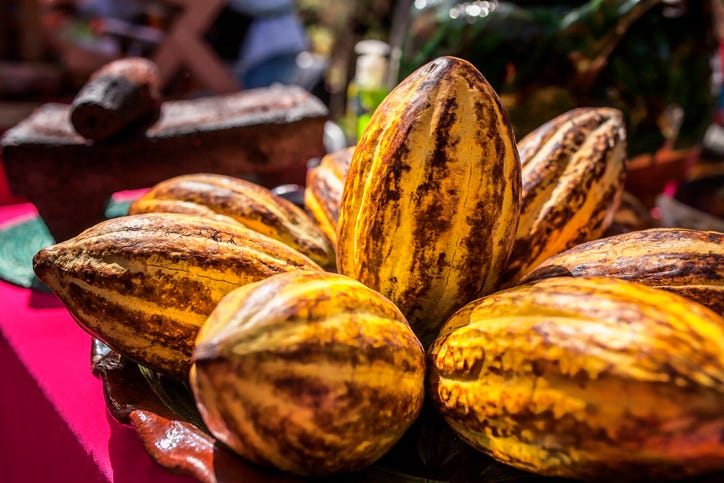Part 4: Cocoa’s Broken Promises – Can Farmers Ever Share in the Wealth?
Thus far, we have journeyed through history, economics, and policy, laying bare how Ghana, Côte d’Ivoire, Cameroon, Nigeria, and Indonesia cultivated thriving cocoa industries often at the expense of their smallholder farmers’ well-being. We’ve seen farmers feted as “economic heroes” yet living in poverty, bumper harvests coinciding with low incomes, and differing policies trying (or not) to bridge that gap. Now, in this final essay, we confront the heart of the matter: the human and environmental dimensions of the cocoa-chocolate value chain. This is an argumentative op-ed, so expect a passionate examination of farmer livelihoods (are they earning a living income or barely surviving?), social issues like child labour, and environmental concerns from deforestation to climate change. I’ll highlight evidence from reputable sources – industry reports, NGOs, academic studies – and weave in the voices and proverbs of the communities affected. As a Ghanaian might say, “It is the person wearing the shoe who knows where it pinches.” So we will let the cocoa farmers’ realities pinch our conscience. I’ll argue that many well-publicised “sustainability” efforts by governments and big chocolate companies, while steps in the right direction, often treat symptoms, not causes. We must challenge rosy data that suggests progress if farmers themselves still report hardship. Ultimately, I will lean into a bias – unapologetically – for the smallholder, contending that sustainable cocoa is impossible without radically improving the lot of the people who grow it. There’s an Ashanti proverb: “When the drumbeat changes, the dancers must adapt.” The drumbeat of global awareness is changing towards ethical consumption; our five countries and industry at large must adapt by empowering farmers, not exploiting them. Let’s delve into why and how.
The Poverty Trap in a $100 Billion Industry: The world loves chocolate – an indulgence powering a $100+ billion industry – yet the majority of cocoa farmers live in what can only be described as poverty. Hard evidence: A study cited by the World Economic Forum found that an average cocoa farmer in Ghana earns around $1 per day, and in Côte d’Ivoire, only about $0.78 per day. These figures are well below the extreme poverty line (roughly $2.15/day). It is jarring to realise that while a luxury chocolate bar might sell for $5 in London or New York, the farmer who grew the main ingredient can’t afford basic needs. How did we get here? Partly due to the structural imbalance we discussed earlier, farmers capture perhaps 6%–8% of a chocolate bar’s value, while manufacturers and retailers take over 70%. But it’s also because yield and farm sizes are low (many farmers have 2-hectare plots and get only a few bags of cocoa per season), and because farmgate prices have historically been depressed.
Consider Ghana and the Ivory Coast: they recognised this moral and economic crisis and instituted the Living Income Differential (LID) to channel more money to farmers. The $400/ton LID, if fully passed on, could add a few hundred dollars to a farmer’s annual income – meaningful, but likely still not enough to reach a “living income” (which NGOs estimate would require doubling or tripling current farm income). Indeed, the Cocoa Barometer 2018 bluntly stated: “Not a single company or government is anywhere near reaching the sector-wide objective of eliminating child labour, because none have truly tackled farmer poverty.”. And two years later, those words remained true – as of 2020, neither Ghana nor the Ivory Coast had reduced child labour by the pledged 70%, which is unsurprising given poverty rates hadn’t significantly improved. In Nigeria and Cameroon, where no LID exists, farmers rely on rising world prices to lift incomes. That happened in 2021–2023 to some extent, but inflation ate much of it (for example, Nigeria’s high cocoa prices in naira were offset by skyrocketing fertiliser costs and general inflation. In Cameroon, farmer incomes remain very low
Keep reading with a 7-day free trial
Subscribe to Cocoa Diaries Newsletter to keep reading this post and get 7 days of free access to the full post archives.


